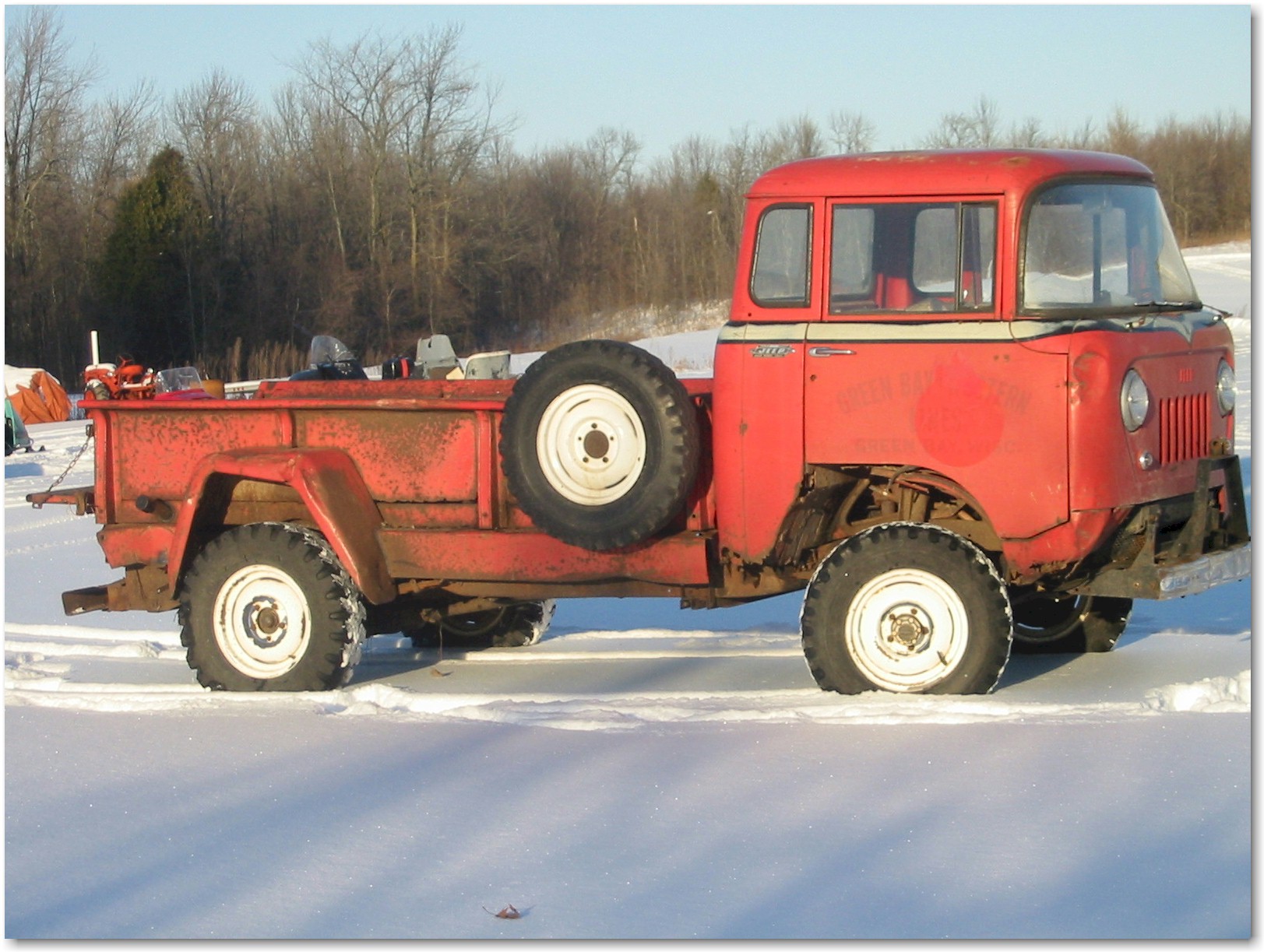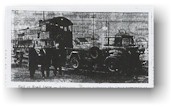A Jeep four-wheel drive maintenance truck still carries traces of Green
Bay & Western lettering.
| The
Jeep FC 170: |
|
Willys Motors began production of
the four-wheel-drive Jeep Forward Control (FC) truck in 1956. Two
models were offered, the four-cylinder FC-150 and the six-cylinder
FC-170. The FC-170 had a 3,500 pound payload capacity and a
110" truck bed that was actually longer than the wheelbase
length!
Approximately 32,000 Jeep FCs were
built before the end of production in 1965. |
| Modeling
a Jeep FC: |
|
You can base an HO scale model of
the GBW's Jeeps on an EKO Jeep
vehicle
($2.49 retail), although the EKO model is actually a Jeep FC-150,
not a FC-170. The FC-150 had a shorter bed (6'-6" vs.
9'-0") and an inline 4-cylinder engine instead of an inline 6
-- although I suspect that that second fact won't be noticeable on
an HO model!
|
The Green Bay & Western added two hi-rail Jeep FC 170s to its fleet
in 1962; they remained in service until 1970 when Jameson Shipley's
grandfather, worked for the Green Bay & Western Lines for
many years, purchased the pair. Jameson is restoring one of the
trucks. You can still see traces of the Green Bay
& Western lettering on the door, and the paint scheme is based on
the red & gray scheme used
on locomotives in that era.
The November 18, 1962 Green Bay
Press-Gazette had the following article about these vehicles:
Area Railway Now Using Popular Jeep
Don't be surprised one of these days if you're flagged down by a
four-wheel drive Jeep at a Green Bay and Western crossing anywhere
between Kewaunee, Wis and Winona, Minn. This week American Auto sales in
Green Bay delivered two of the versatile Jeeps to the locally based
freight carrier, the only line which provides through service east and
west across the state. The FC 170 Jeeps are fitted with special railroad
wheels, but retain original rubber tired wheels for the road. The Green
Bay and Western Jeeps won't be hauling freight. They're maintenance
vehicles which will provide the railroad with speedy units to check
rails, bridges and signal equipment on a daily basis.
Better Visibility
The cab-over-engine Jeep models were selected because of their
better visibility, dependability and versatility, according to L. M.
Becker, Vice-president of American Auto Sales. During the winter they
will be equipped with snow plows that will make them completely
maneuverable on the rails, highways and even over rough terrain.
"The rugged construction and long recognized dependability makes it
an important asset to a railroad which operates on a rigid time schedule
that must be met and maintained," Becker declared. "This model
Jeep is ideal for rail because it is fast, efficient and ready to go any
hour of the day for regular or emergency services," he added.
Two Way Radios
The Jeeps are equipped with two-way radios for quick communication
anywhere along the railroads 200 miles of lines. The radio equipment is
particularly important in emergencies because the vehicles can move over
the roughest kind of terrain off regular roads to reach any point along
the line where trouble may occur.
|

L. M. Becker, Vice President of American Auto, R. A. Hagen,
Roadmaster and L. H. Wolfe, Track Supervisor in front of GBW's
Jeep FC 170 hi-rail vehicles and an Alco S-2 switcher.
|
|



